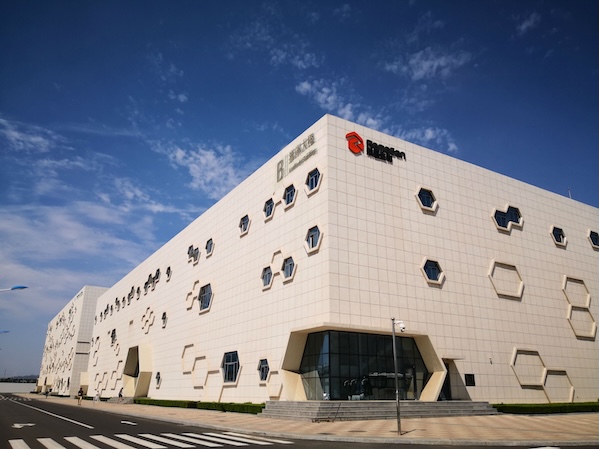Another “patent extension king” for Chinese medicines is born
June 19, 2025
Source: drugdu
 152
152

Recently, Rongchang Bio announced that it had received the "Approval Decision on Compensation for Pharmaceutical Patent Term" issued by the State Intellectual Property Office, stating that its core product, Taitasip Injection, received 1,827 days of patent compensation, and the protection period was extended from June 15, 2027 to June 15, 2032.
It is worth noting that this is another case in which the pharmaceutical industry has achieved "maximum compensation" since the implementation of the new "Patent Law of the People's Republic of my country" (hereinafter referred to as the "Patent Law") in 2021.
Institutional breakthrough
Since June 1, 2021, my country's new Patent Law has come into effect, which adds a clause on compensation for the patent term of drugs. Article 42, paragraph 3 of the Patent Law stipulates: In order to compensate for the time taken for the approval of new drug marketing, the State Council Patent Administration Department shall, at the request of the patent holder, grant patent term compensation for invention patents related to new drugs that have obtained marketing authorization in China. The compensation period shall not exceed five years, and the total effective patent term of new drugs after approval for marketing shall not exceed fourteen years.
It takes an average of more than ten years for a new drug to go from patent application to market launch, while the general patent protection period is only twenty years, resulting in a significant reduction in the actual market exclusivity period. Take Ensartinib, a Class 1 new drug from Beida Pharmaceutical, as an example. After 13 years of research and development, it was launched in November 2020. Its compound patent expires in 2031, and the remaining valid patent period after listing is nearly 11 years. If the drug can be included in the scope of application of special subsidy period compensation, the market exclusivity period will be extended. The compound patent (ZL03139760.3) of Sidanilide, which was launched earlier (approved in January 2015), was originally scheduled to expire in 2023. The actual protection period after listing was only 8 years, becoming a typical dilemma case before the implementation of the system.
The pharmaceutical patent term compensation system directly hits the pain points of the industry. Its core value lies in solving the special time dilemma of patent protection period loss caused by the long drug development cycle and complicated approval process.
In June 2025, Rongchang Bio's core patent for Tacicept Injection, "Optimized TACI-Fc Fusion Protein" (ZL200710111162.2), received 1,827 days (nearly 5 years) of patent compensation from the State Intellectual Property Office. The protection period was extended from June 15, 2027 to June 15, 2032, covering the market exclusivity period for key indications such as systemic lupus erythematosus and myasthenia gravis.
Previously, Zhengda Tianqing/Kongfang Bio's patent for penpulimab injection for the treatment of lung cancer (ZL201610705763.5) was granted a 140-day compensation period, extended from August 23, 2036 to January 10, 2037.
While pharmaceutical patent term compensation guarantees the motivation of innovative pharmaceutical companies to conduct research and development, it may also increase the burden of medication for patients by delaying the launch of generic drugs. To this end, relevant patent laws and regulations clearly state that only patents that have not been compensated can apply for extensions, and when the same drug involves multiple patents, only one extension can be selected, and when a single patent covers multiple drugs, only one drug can be applied for. These regulations not only prevent innovative pharmaceutical companies from repeatedly obtaining patent term compensation, but also prevent excessive extension of the protection period.
The patent protection period extension system originated from the Drug Price Competition and Patent Term Compensation Act, also known as the Hatch-Waxman Act, which was enacted by the United States in 1984. Subsequently, many countries or regions such as Japan, South Korea, the European Union, and Canada have also established similar systems to compensate for the loss of patent protection period caused by the time taken by the innovative drug approval process.
The compensation period for drug patents varies greatly between countries. In China and the United States, the patent compensation period cannot exceed 5 years, and the total patent period cannot exceed 14 years. The European Union also stipulates that the compensation period cannot exceed 5 years, but the total patent period for first-time approved drugs can be extended to 15 years.
The world's first
Why can Taitasip be compensated for the five-year drug patent term?
Taitasip is the world's first BLyS/APRIL dual-target fusion protein innovative drug, which uses the human transmembrane activator and calmodulin ligand interactor (TACI) receptor extracellular domain and the Fc segment of human immunoglobulin G (IgG) to simultaneously inhibit the overexpression of B lymphocyte stimulator (BLyS) and proliferation-inducing ligand (APRIL), thereby blocking the differentiation and maturation of abnormal B cells from the source, thereby reducing autoimmune response. This "two-pronged" mechanism of action significantly optimizes drug safety while improving the effectiveness of treatment, bringing a breakthrough solution to the field of autoimmune diseases.
In March 2021, Taitasip was approved by the National Medical Products Administration for the treatment of moderate to severe systemic lupus erythematosus (SLE), becoming the world's first dual-target biologic for SLE. Key clinical data showed that the systemic lupus erythematosus response index (SRI) of the high-dose group of Taitasip after 48 weeks of treatment reached 79.2%, significantly higher than that of the placebo group (32.0%). Taitasip will be included in the national medical insurance catalog at the end of 2022.
In July 2024, Taitasip was approved for its second indication for the treatment of rheumatoid arthritis, further expanding its application scenarios in the field of autoimmune diseases.
In May 2025, Taitasip won its third indication and was approved by the National Medical Products Administration for use in combination with conventional treatment for adult generalized myasthenia gravis (gMG) patients with positive anti-AChR antibodies, becoming the world's first BLyS/APRIL dual-target biological drug for the treatment of myasthenia gravis.
Phase 3 clinical data disclosed at the 2025 American Academy of Neurology (AAN) Annual Meeting showed that after 24 weeks of treatment, 98.1% of patients' myasthenia gravis daily activities score (MGADL) improved by ≥3 points, and 87% of patients' quantitative myasthenia gravis score (QMG) improved by ≥5 points, with significant efficacy advantages.
According to Frost & Sullivan, there are approximately 1.2 million MG patients worldwide, of which 220,000 are in China. The market size of myasthenia gravis in China is expected to increase from US$46 million in 2020 to US$250 million in 2025.
At present, the innovative drugs for the treatment of myasthenia gravis that have been launched in China are mainly provided by multinational pharmaceutical companies, such as AstraZeneca's eculizumab and reslizumab, UCB's rozelixizumab, and Zai Lab's agamod introduced from Argenx. The approval of tadalafil for the indication of systemic myasthenia gravis not only fills the gap of domestic innovative drugs in this field, but its dual-target mechanism is also expected to rewrite the treatment pattern.
In addition, the myasthenia gravis indication has been granted breakthrough therapy designation and priority review status by the National Medical Products Administration, as well as orphan drug status and fast track designation by the U.S. FDA.
Rongchang Biopharma is continuing to develop multiple indications of Tetasip, including IgA nephropathy, neuromyelitis optica spectrum disorder, primary Sjögren's syndrome, and multiple sclerosis. Among them, IgA nephropathy and Sjögren's syndrome indications are expected to be submitted for listing in the second half of 2025. Multi-center overseas key Phase 3 clinical studies are being promoted simultaneously.
In 2024, Taitasip achieved revenue of 977 million yuan, a year-on-year increase of 94.87%, demonstrating strong market growth momentum.
Enhance bargaining power
Rongchang Biopharma's net profit attributable to shareholders of the parent company in the first quarter of 2024 was -254 million yuan. For Rongchang Biopharma, which is still struggling with losses, the five-year patent extension is like a shot in the arm.
The original patent of Taitasip will expire in 2027, which may lead to the launch of generic drugs in 2028. By extending the domestic patent exclusivity period to 2032, Taitasip will enjoy an additional five years of golden sales period without generic competition. With reference to Taitasip's revenue of nearly 1 billion and a growth rate of 94.87% in 2024, Taitasip's cumulative sales in the next five years of exclusivity may exceed 10 billion. This will significantly improve the company's cash flow and support its huge R&D pipeline.
Rongchang Biopharma's total revenue in 2024 was 1.717 billion yuan, a year-on-year increase of 58.54%, mainly driven by tetasip and another new drug, vedicizumab.
The extension of the patent term to 2032 not only builds a more solid moat for Taitasip in the domestic market, but also significantly enhances its bargaining power in international cooperation by strengthening the value of intellectual property rights.
Currently, the US Phase III clinical trial of tetasip for the treatment of myasthenia gravis (gMG) is underway, and this indication was granted orphan drug status by the US FDA in 2022, and will enjoy a 7-year market exclusivity period after it is launched in the United States.
In March 2024, the U.S. FDA granted fast track designation for tetasipirab for the treatment of Sjögren's syndrome. Currently, no biologics have been approved for this indication worldwide.
In regions such as Europe and Southeast Asia, the extension of patent terms provides more stable commercialization cycle expectations for technology licensing cooperation.
The extension of the patent protection period to 2032 can ensure that partners can obtain returns on their investments over a longer period of time, reduce the risk of generic drug competition, and enhance overseas partners’ confidence in the product life cycle.
Rongchang Bio revealed that during the 62nd Annual Meeting of the European Society of Nephrology (ERA), BD heads of several multinational pharmaceutical companies took the initiative to contact Rongchang Bio and started in-depth consultations on the commercialization paths of Taitasip, including international licensing and technical cooperation.
Conclusion
As of 2025, Taitasip has been approved for three indications in China: systemic lupus erythematosus, rheumatoid arthritis, and myasthenia gravis. Its sales in 2024 reached 977 million yuan, a year-on-year increase of 94.87%. The extension of patent protection to 2032 not only locks in a market space worth tens of billions of yuan for the company, but also gives it a key bargaining chip in overseas licensing negotiations.
https://news.yaozh.com/archive/45646.html
By editorRead more on
- Jinghong Medical Secures Series A Strategic Financing, Co-led by Venture Capital and Binhu Industrial Group with FTEC Capital as Exclusive Financial Advisor December 29, 2025
- Brazil to launch single-dose dengue vaccination program; Chinese companies help boost vaccine production capacity December 29, 2025
- China Biopharmaceutical’s innovative drug TQH3906 completes Phase II clinical trial. December 29, 2025
- Transcenta Group-B and EirGenix Reach Biopharmaceutical Manufacturing Collaboration Agreement December 29, 2025
- Sinovac Biotech’s adsorbent tetanus vaccine officially launched December 29, 2025
your submission has already been received.
OK
Subscribe
Please enter a valid Email address!
Submit
The most relevant industry news & insight will be sent to you every two weeks.



